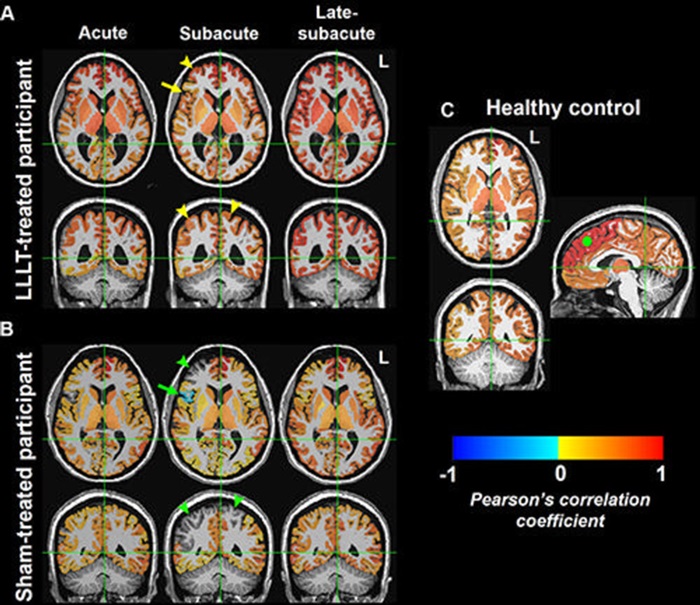Low-Level Light Therapy Heals Serious Brain Injuries
Posted on 29 May 2024
Different wavelengths of light have been explored over the years for their potential to enhance wound healing. Now, a new study has found that low-level light therapy could have a beneficial effect on recovery in individuals who have experienced significant brain injuries.
In the study published in the journal Radiology, researchers at Massachusetts General Hospital (MGH, Boston, MA, USA) administered low-level light therapy to 38 patients who had sustained moderate traumatic brain injuries—sufficiently severe to affect cognition or to be detectable via brain scan. The therapy was applied within 72 hours of injury using a helmet that emits near-infrared light. To assess the impact of this treatment, functional MRI scans were used, focusing on the brain's resting-state functional connectivity, which examines communication between brain regions when a person is not actively performing tasks. The MRI evaluations were conducted at different stages: within one week of the injury (acute phase), two to three weeks post-injury (subacute phase), and three months after injury (late-subacute phase).

Of the 38 patients, 21 did not receive light therapy while using the helmet; they served as controls to reduce bias related to patient characteristics and to avoid placebo effects. The findings showed that patients who received light therapy exhibited significantly more changes in resting-state connectivity between seven pairs of brain regions during the acute-to-subacute phase compared to the controls. This increased connectivity was most notable in the first two weeks. However, the researchers did not find long-term differences in connectivity between the two groups, indicating that while light therapy may boost brain connectivity initially, its enduring effects remain unclear. The exact mechanism by which light therapy impacts the brain is still under investigation, although it is believed to involve changes in an enzyme within the cell's mitochondria, leading to increased production of adenosine triphosphate, the energy storage and transfer molecule in cells.
Light therapy is also associated with the dilation of blood vessels and anti-inflammatory effects. Despite the increased connectivity observed in patients treated with light therapy during the acute to subacute phases, no significant differences in clinical outcomes were noted between the treated and control groups. Further studies with larger patient groups and extended imaging timelines beyond three months are needed to better understand the therapeutic potential of light in treating traumatic brain injuries. Researchers anticipate that the scope of light therapy will expand as more findings emerge. The 810-nanometer wavelength light used in this study is already used in various therapeutic contexts. It is safe, straightforward to administer, does not involve surgery or drugs, and can be used outside hospital settings due to the helmet's portability. It could find applications in treating several other neurological conditions such as PTSD, depression, and autism, which are all promising areas for light therapy.
Related Links:
MGH














